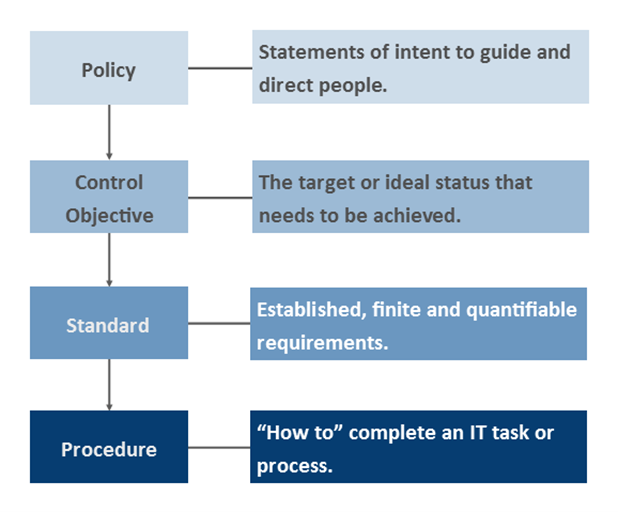
Articles
How to Organize Policies and Procedures for the Workplace

Are you an entrepreneur, founder, manager, or operational leader looking to scale your business? It's time to take action and start strategizing on how to organize policies and procedures. Creating a systematic process for developing and implementing policies and procedures can aid in achieving sustained success.
Whether it’s onboarding new employees or providing training experiences, knowing how to organize policies and procedures is essential in any organization. Let's explore the key steps needed when tackling this important task.
How to Organize Policies and Procedures in the Workplace
Learning how to organize policies and procedures is essential for any business. Creating a successful system necessitates determining the reason for having policies and procedures.
Policies help to ensure consistency across departments, while procedures provide clear instructions on how tasks should be completed. When crafting these documents, it’s important to consider both legal requirements as well as internal needs.
Creating a system for documenting policies and procedures helps keep everyone informed about changes or updates. No matter the method of storage, it is essential to guarantee that all personnel has access to current versions of policy and procedure records constantly. Additionally, it's wise to assign one person (or team) responsible for policy management and procedure updates so nothing falls through the cracks.
Ensuring consistency in implementation is also key when establishing a process for policies and procedures. Staff must be apprised of their duties under each document, which may include obligatory classes or regular supervisory/managerial check-ins to grasp what is anticipated from them on the job every day.
Creating an atmosphere of open dialogue where personnel can pose queries or express qualms can significantly contribute to upholding adherence to established regulations and directives within the organization.
A well-defined system for regulations and practices is indispensable to the accomplishment of any organization, guaranteeing uniformity in application.
Developing Effective Policies and Procedures
Creating successful protocols and regulations is a must for any enterprise, yet constructing efficient ones can be difficult. It's important to identify areas of improvement, craft well-written guidelines, and test the effectiveness of your policies and procedures.
Identify Areas for Streamlining
To begin the process of crafting effective policies and procedures, identify any areas that require updating or streamlining. This could include customer service issues, employee onboarding processes, or anything else that could benefit from having clearer rules and regulations. Take some time to evaluate your current systems to see what needs updating or streamlining.
Creating Policies
Once you have identified the areas that need attention, it’s time to start writing policies. Make sure they are easy to understand by using plain language instead of jargon whenever possible.
Be specific about expectations for employees so there is no confusion about how things should be done. Also, consider adding diagrams or flowcharts if appropriate as these can help make complex instructions easier to follow.

Implement Policies
Once you've crafted new policies and procedures, it's essential to trial them before implementing them across the business.
Have a few trusted employees review them thoroughly before rolling out changes throughout the organization. This will allow you to catch any potential errors or omissions early on, which can save you headaches down the road.
Additionally, once implemented, monitor compliance with existing rules so everyone knows their roles within the company structure clearly outlined by these set standards and regulations.
Learning how to organize policies and procedures is essential for any organization looking to achieve success. With proper policy management, organizations can ensure that their personnel is familiar with the rules and regulations in place as well as understand how to abide by them.
Implementing Policies and Procedures
Training employees on new policies and procedures is essential for any business. It helps ensure that everyone understands the rules and regulations, as well as how to adhere to them.
Create a Training Program
To start, managers should create a comprehensive training program that includes all of the necessary information about the policy or procedure. A thorough explanation of the policy's purpose and its relevance to the company's objectives should be provided.
Managers can also use visual aids such as diagrams or videos to further explain complex topics more engagingly.
Monitor Compliance
Monitoring compliance with existing rules is another key component of implementing policies and procedures successfully. Managers must regularly inspect personnel records to guarantee that their workers are following the set regulations, averting any future legal matters.
Managers should on occasion inspect employee performance data to recognize areas that could use enhancement. They can then provide additional training or take other corrective action if necessary.
Getting Feedback from Employees
Finally, encouraging feedback from employees is essential when implementing policies and procedures effectively within an organization. This allows managers to gain insight into how their staff members feel about certain processes or regulations so they can make adjustments accordingly if needed.
Furthermore, keeping the channels of dialogue open between management and employees fosters an upbeat workplace atmosphere that promotes efficiency and cooperation among personnel. Both of these are advantageous for companies in terms of advancement and success.
Maintaining an Up-to-Date Set of Policies and Procedures
Regularly reviewing existing rules is essential for keeping policies and procedures up-to-date. It’s important to establish a system of regular reviews, such as once every quarter or at least twice a year.
During the review process, it's critical to consider any changes in technology, regulations, laws, industry trends, customer feedback, or other factors that could impact the written policies. Periodic assessment of the organization's adherence to legal stipulations and industry standards is essential to guarantee ongoing compliance.
Making adjustments as needed is an ongoing part of maintaining current policies and procedures. After each review cycle, it’s important to identify any areas where changes should be made based on new information gathered during the review process.
This could include updating language used in documents or revising processes to make them more efficient or effective. It may also involve eliminating outdated rules that are no longer relevant due to changing circumstances within the business environment.
Conclusion
Learning how to organize policies and procedures is a crucial step in ensuring your business runs smoothly. With the right set of rules, you can create an efficient system that will save time and resources while also providing better customer service.
Documenting processes, establishing suitable regulations, correctly executing them, and staying up-to-date are all indispensable steps for enterprises wishing to maximize their operations. By taking these measures now, you'll be well on your way to creating a successful organizational structure with organized policies and procedures that everyone can understand.
Are you an entrepreneur, founder, manager, or operational leader looking to scale your business? Trainual is here to help! Our business playbook software is designed to provide superior onboarding, offboarding, and employee training experiences.
We'll ensure that your team members have the knowledge they need for success while streamlining processes and policies. With our customizable solution tailored specifically for you, take control of your organization today with Trainual's top-notch services.
Similar Blog Posts







